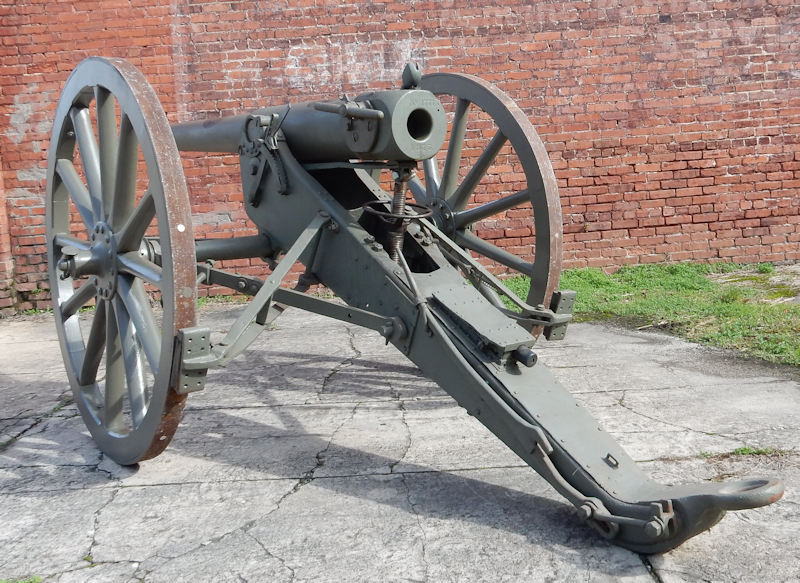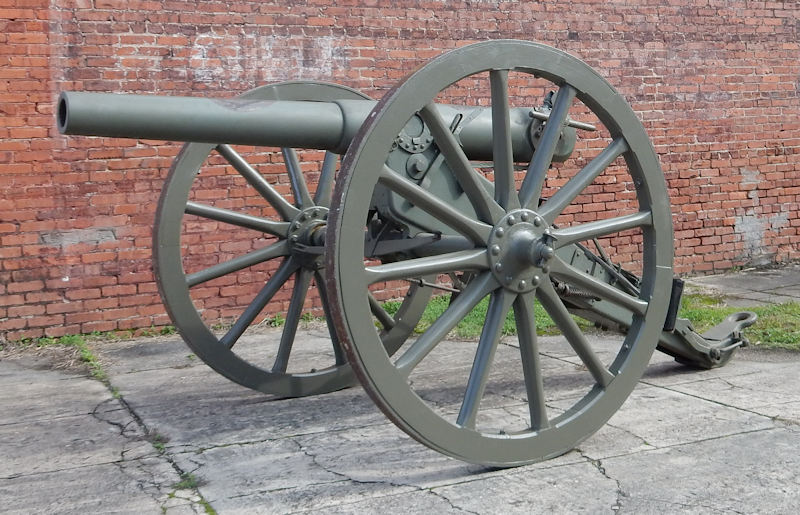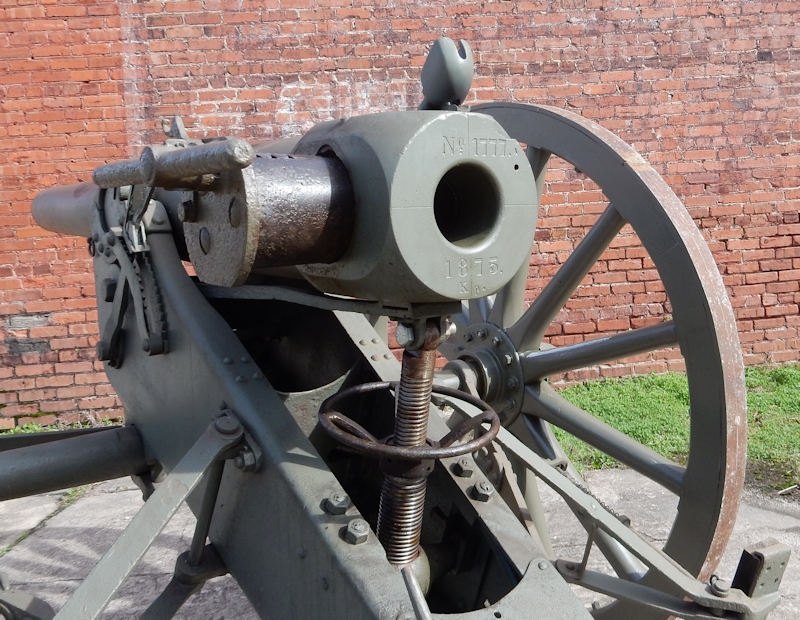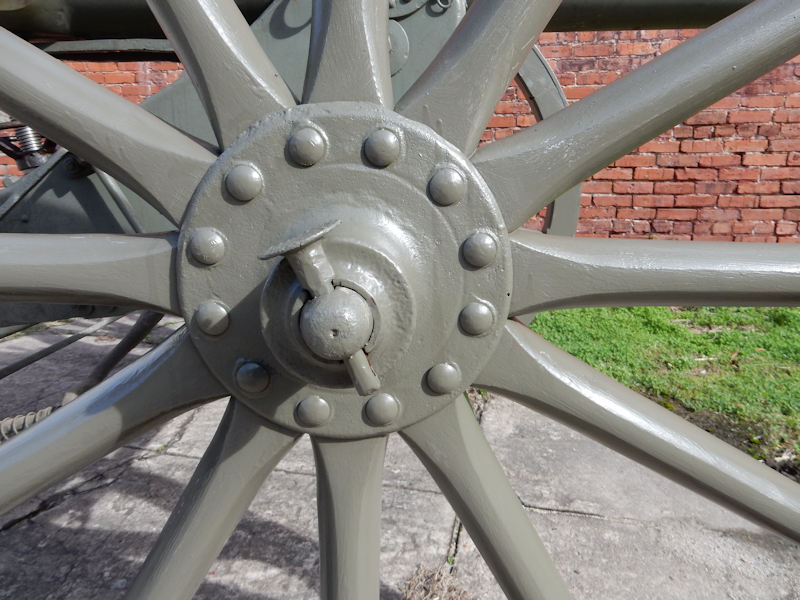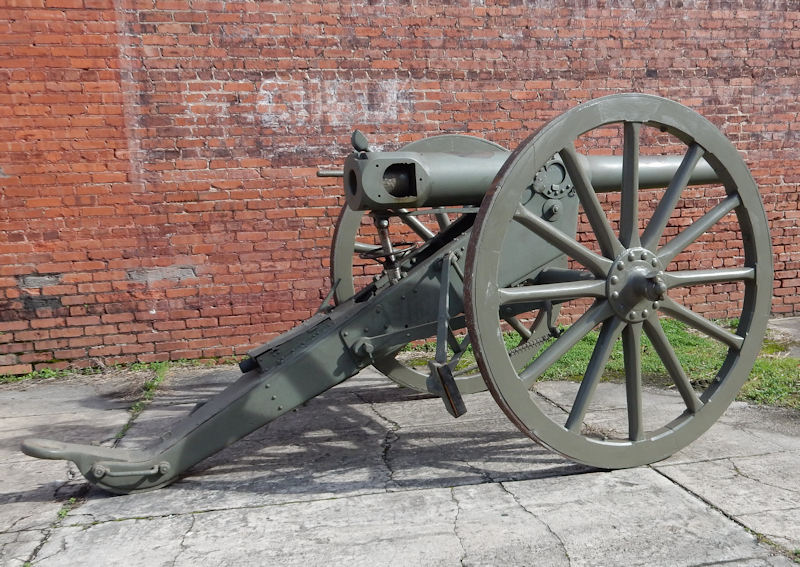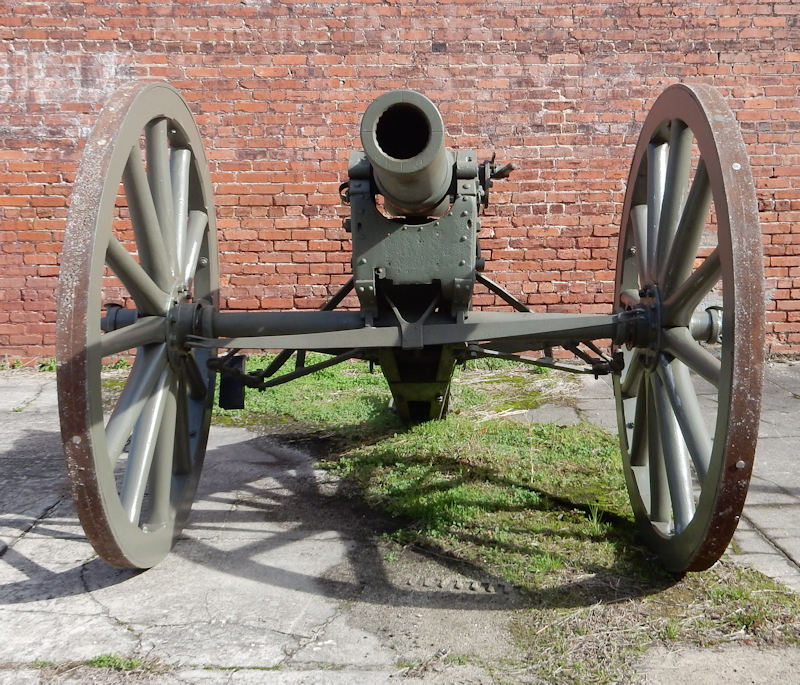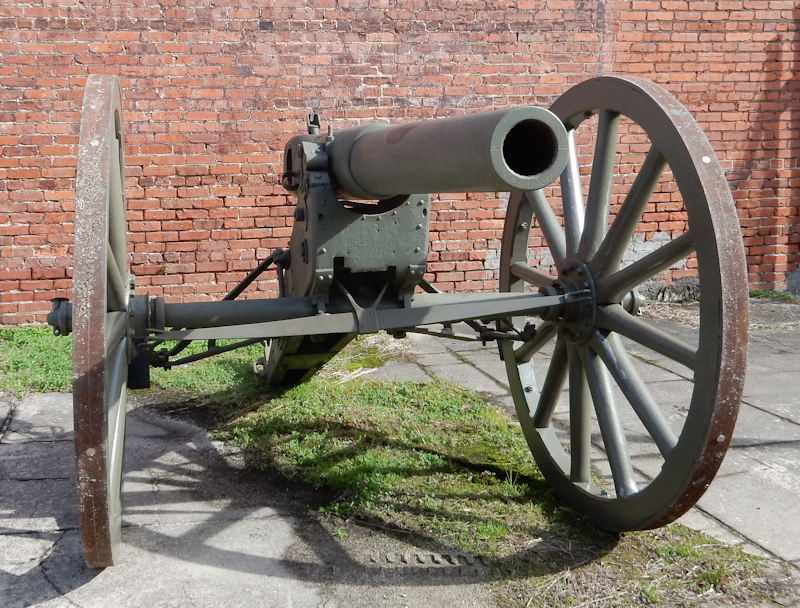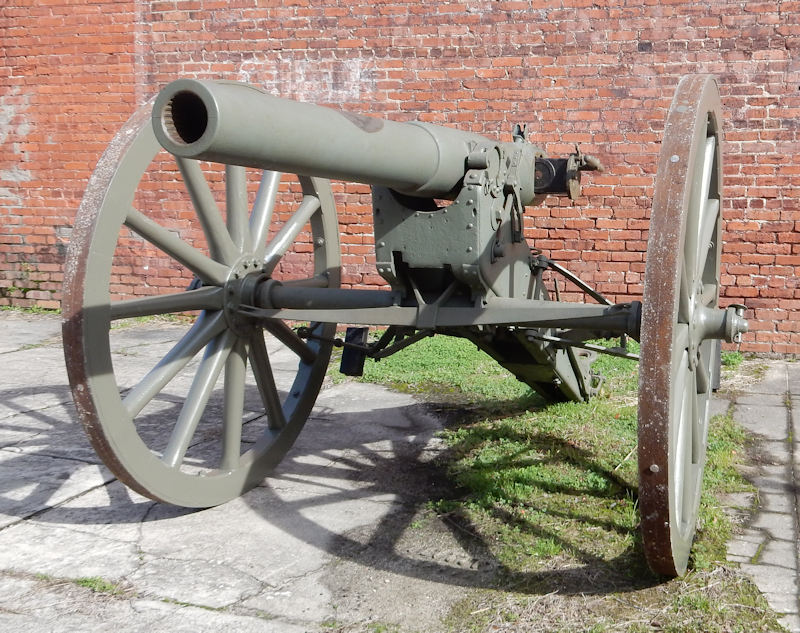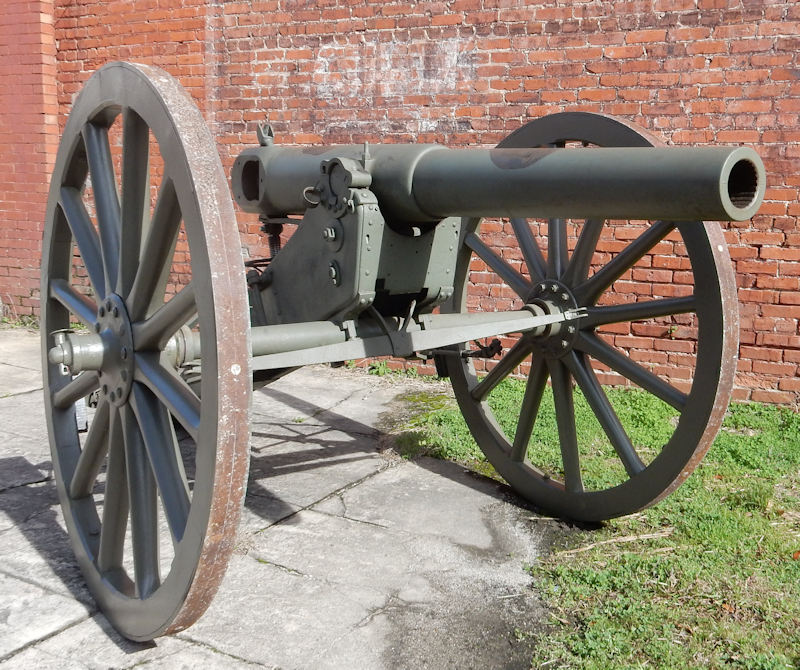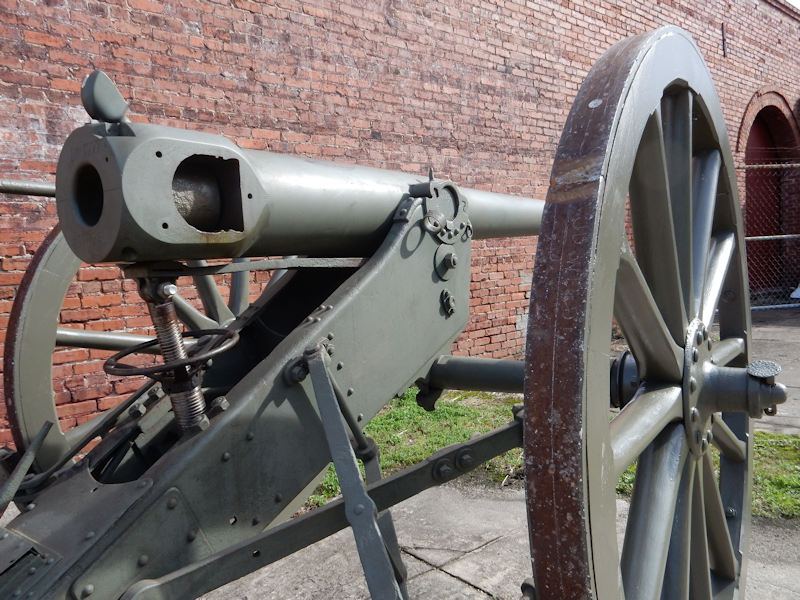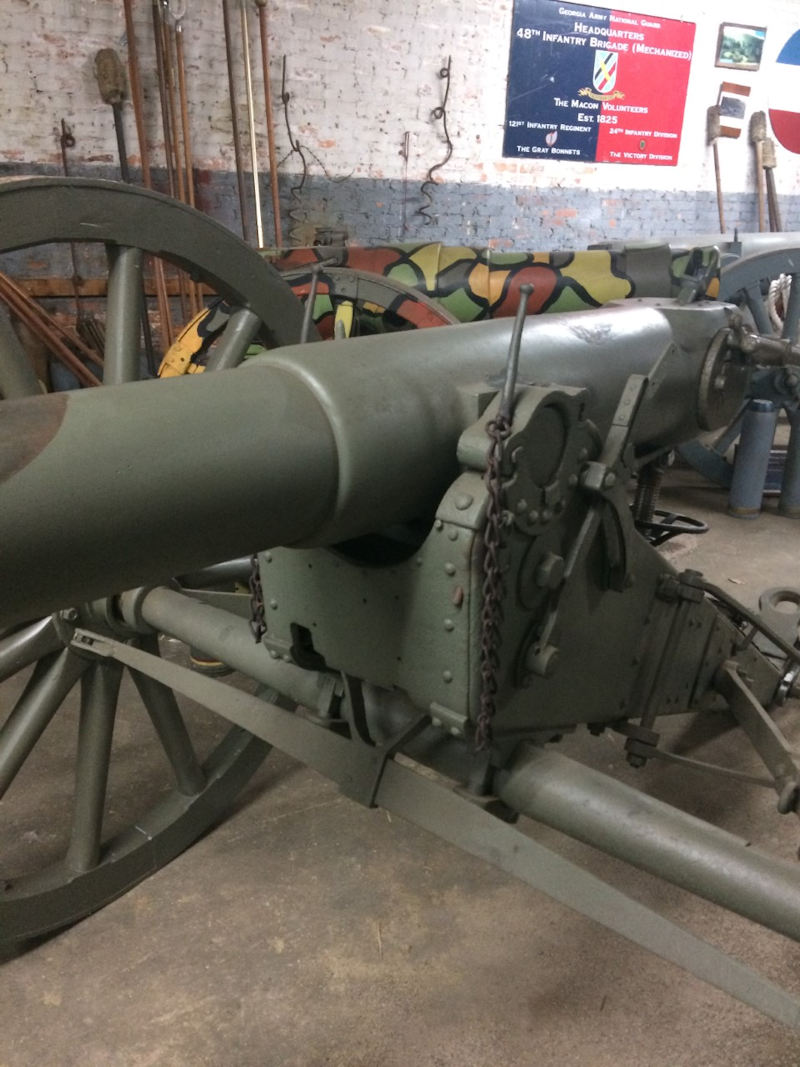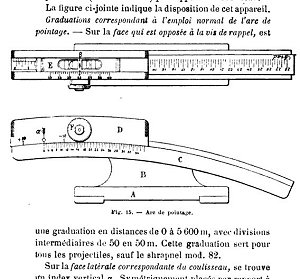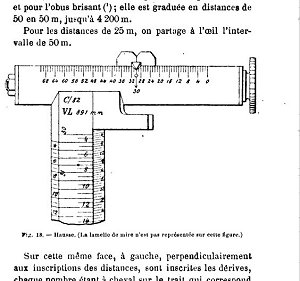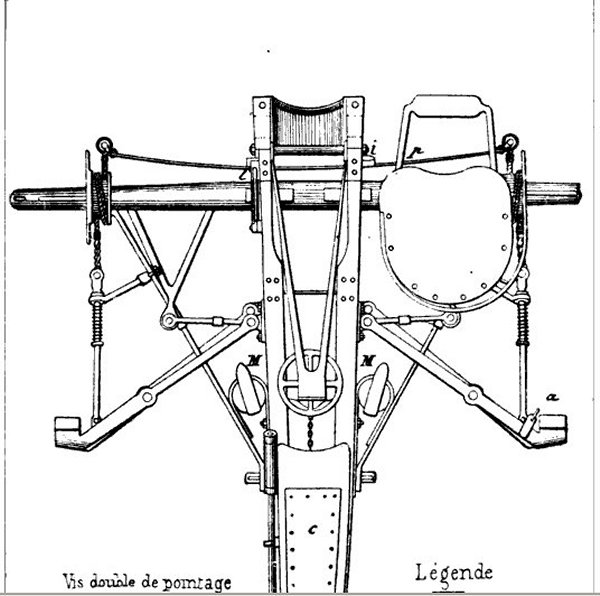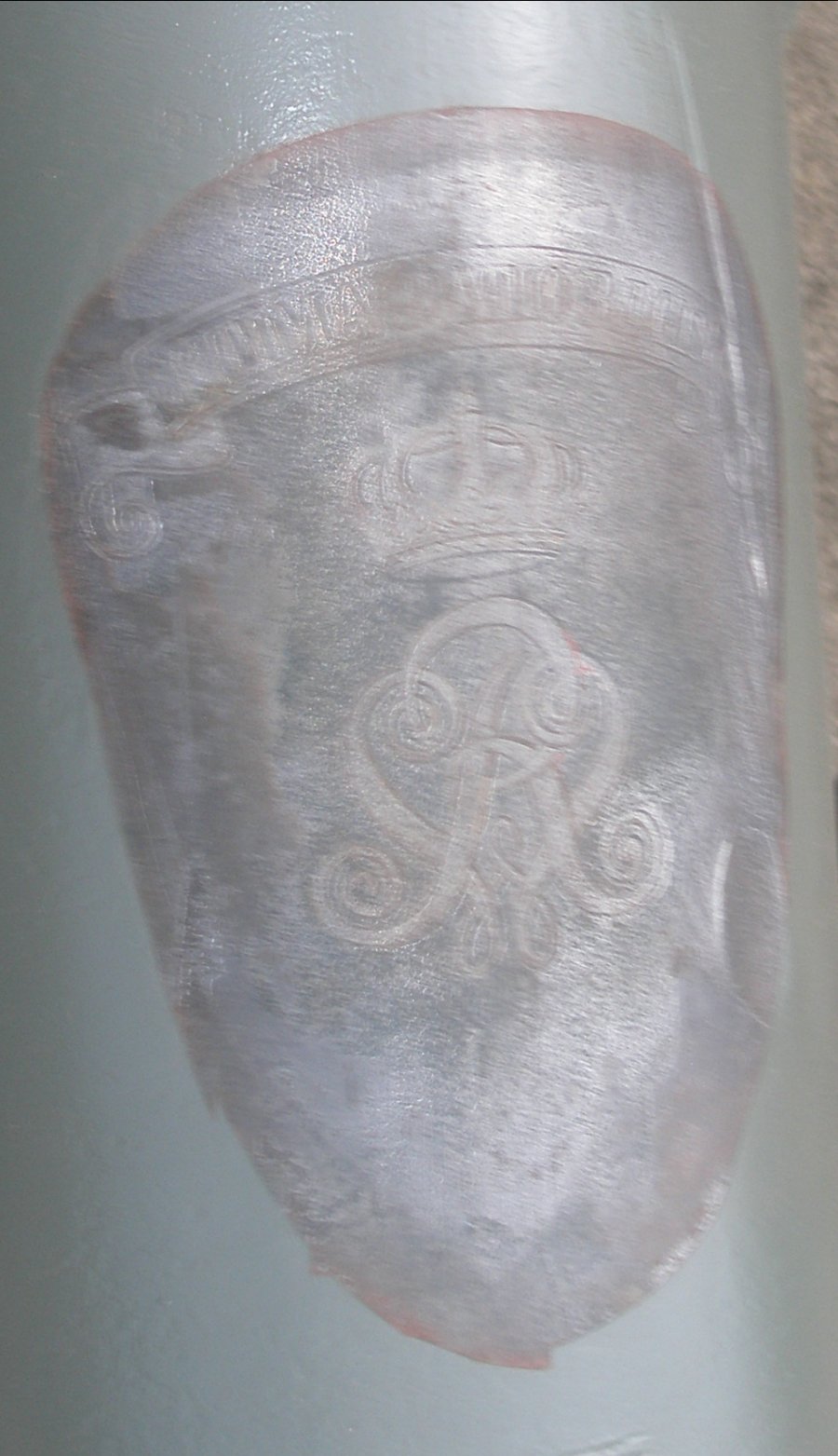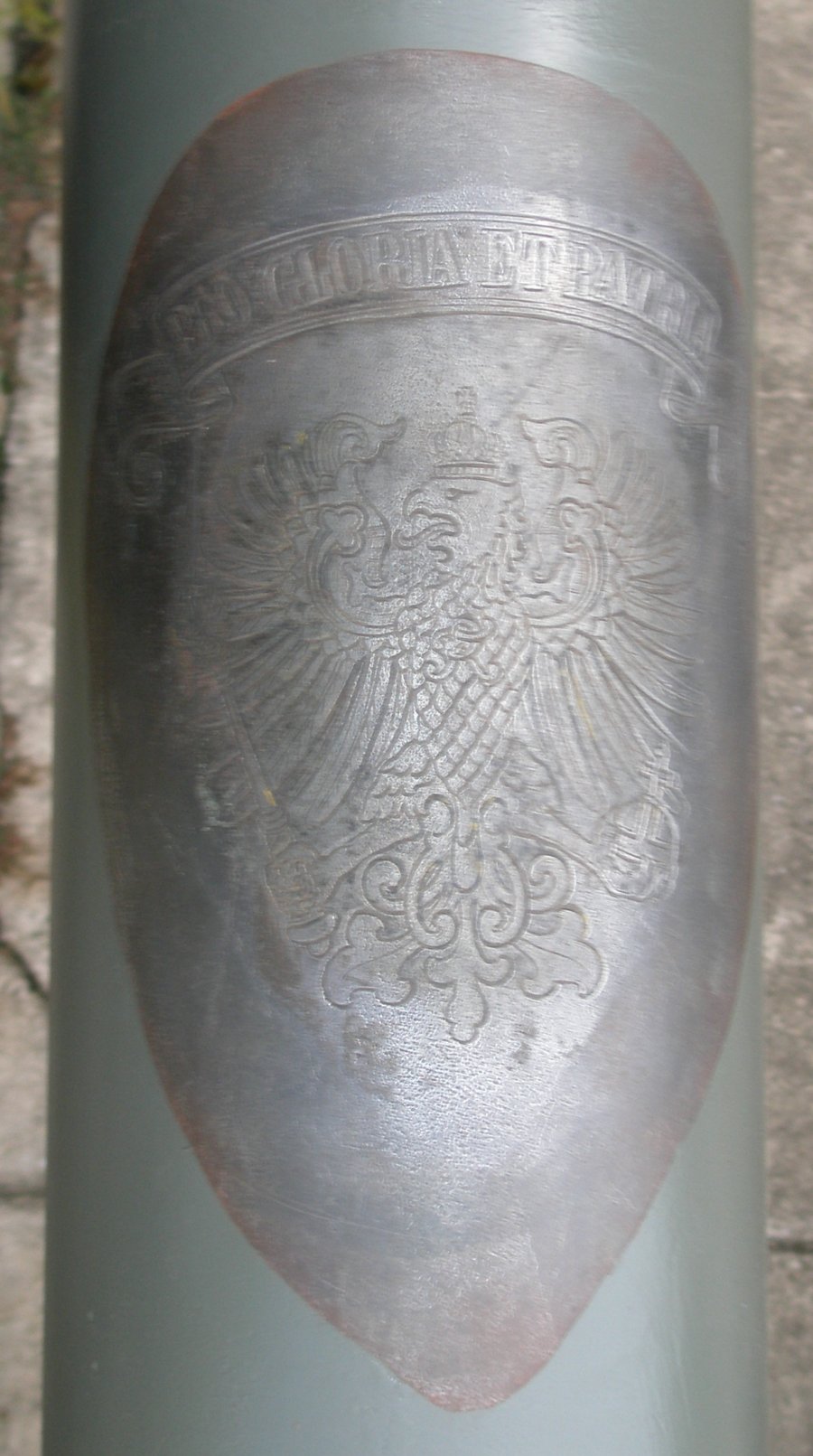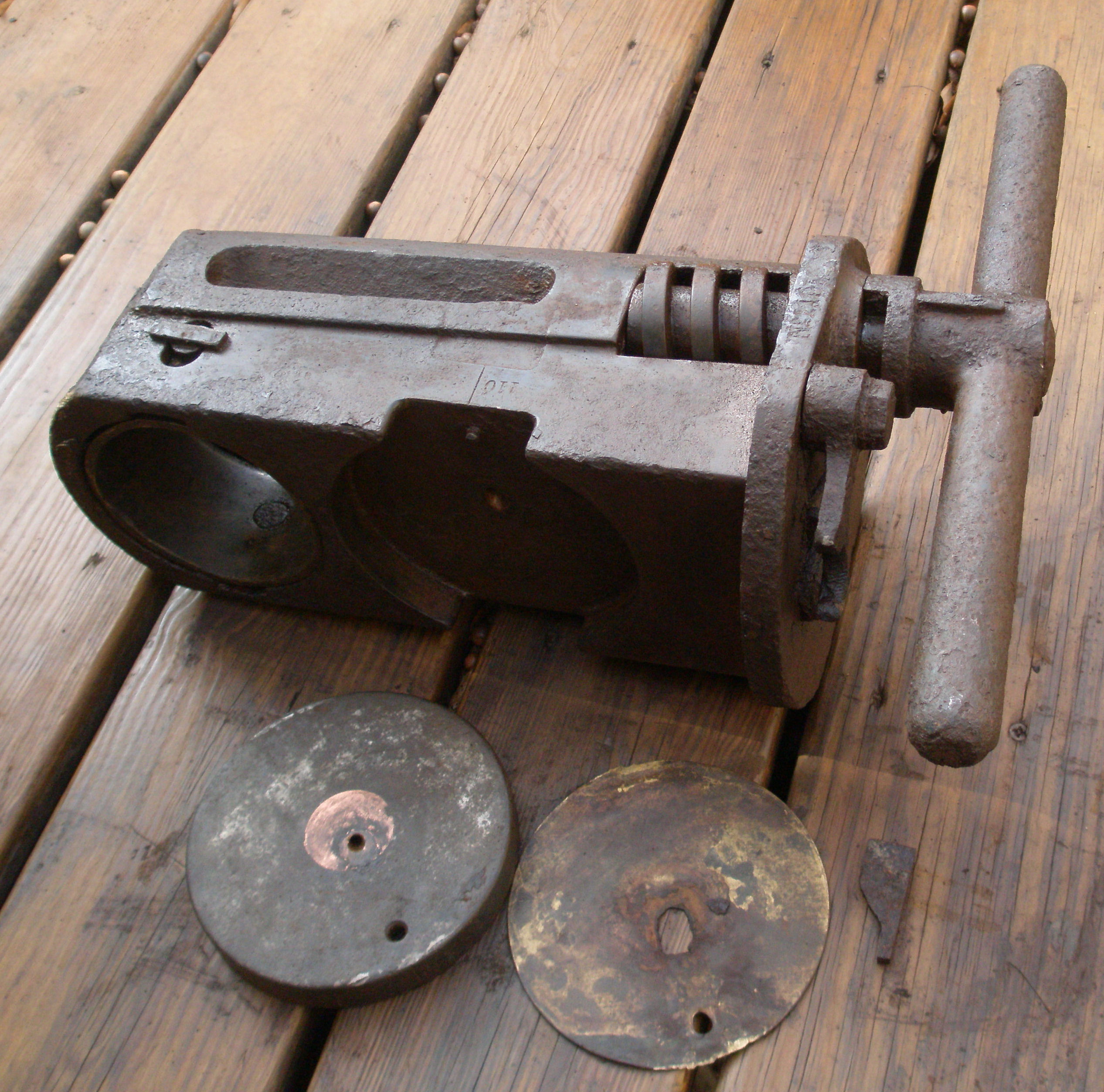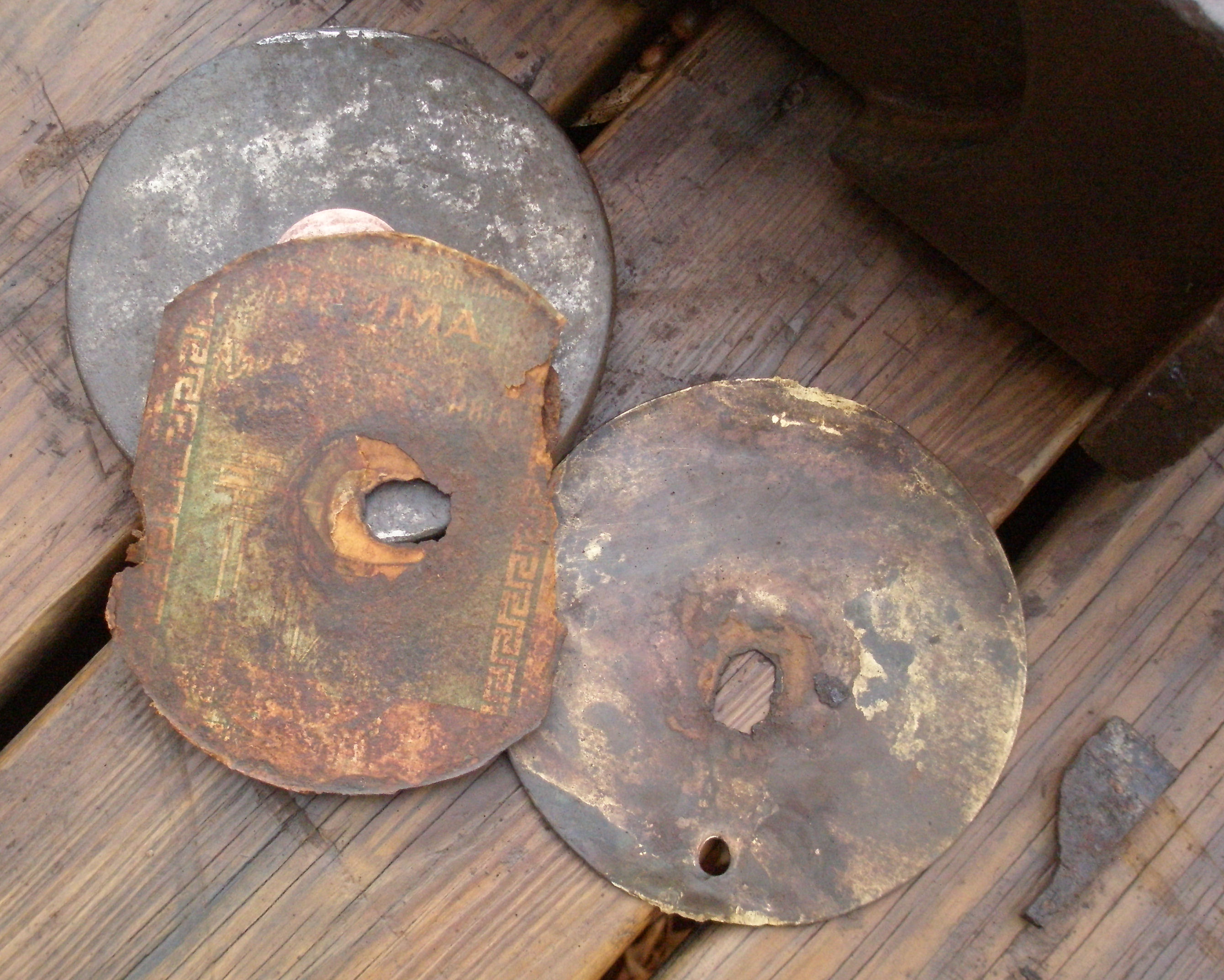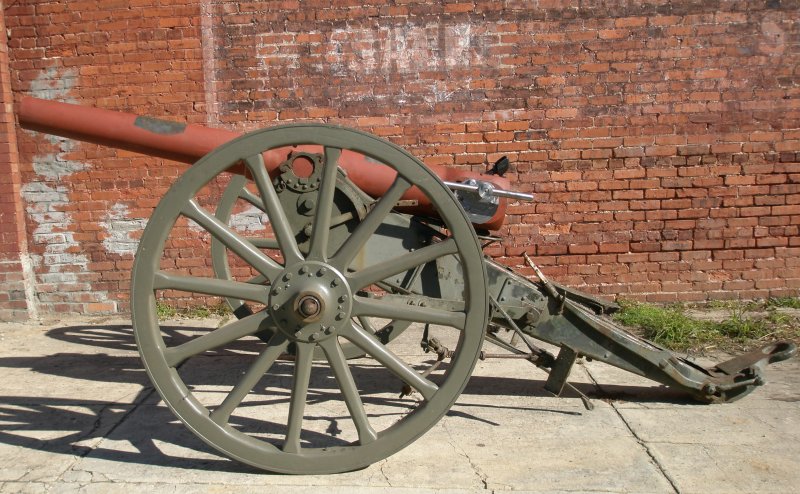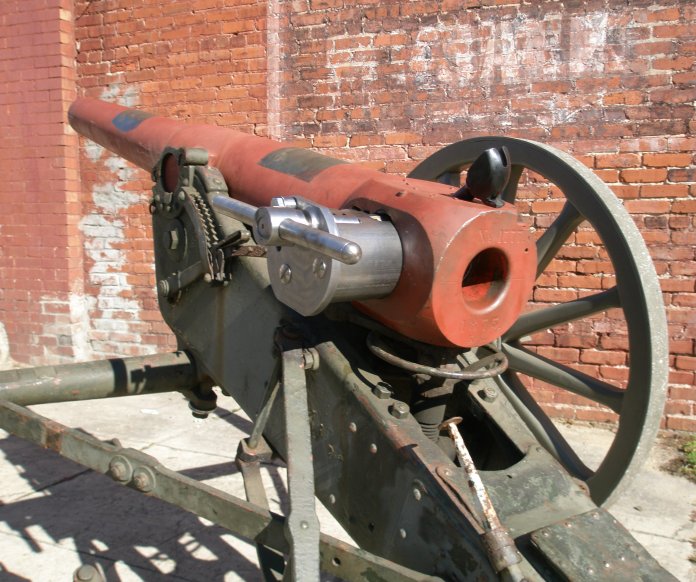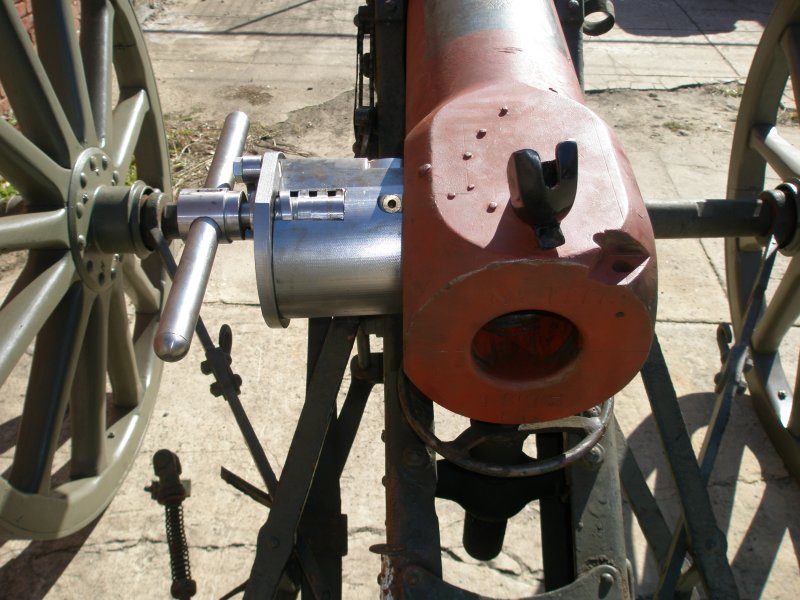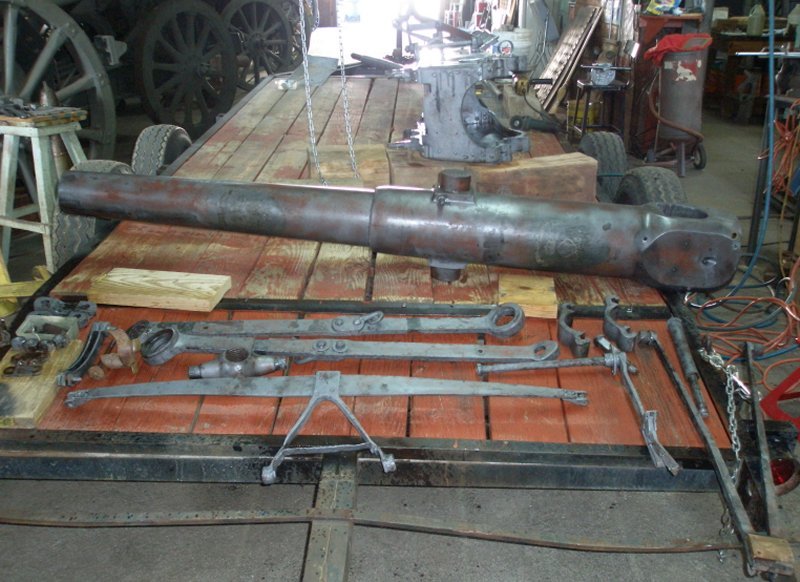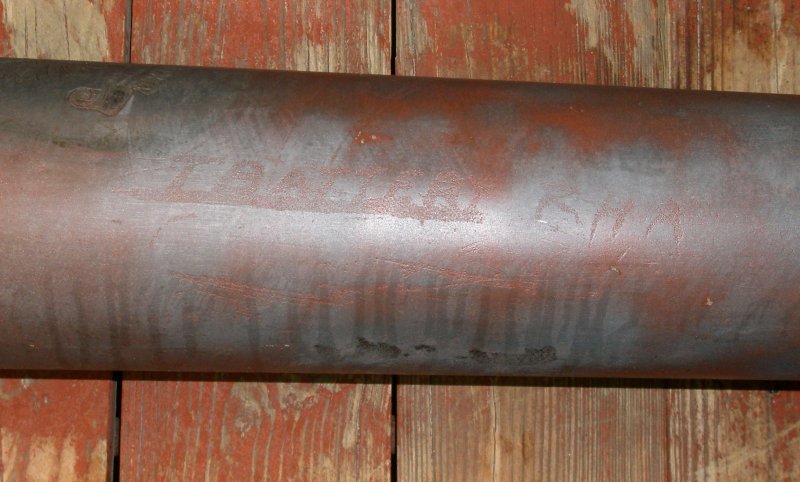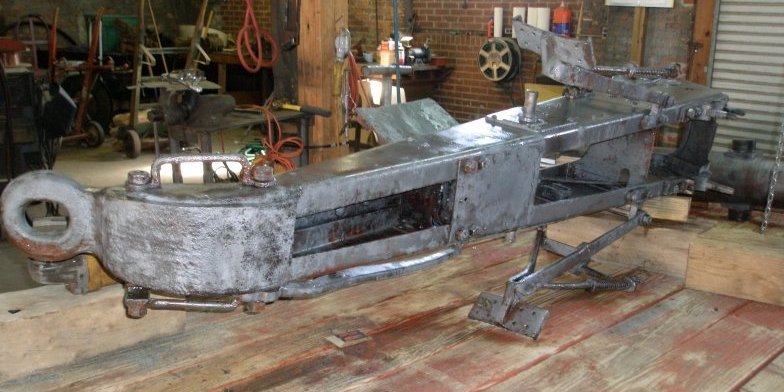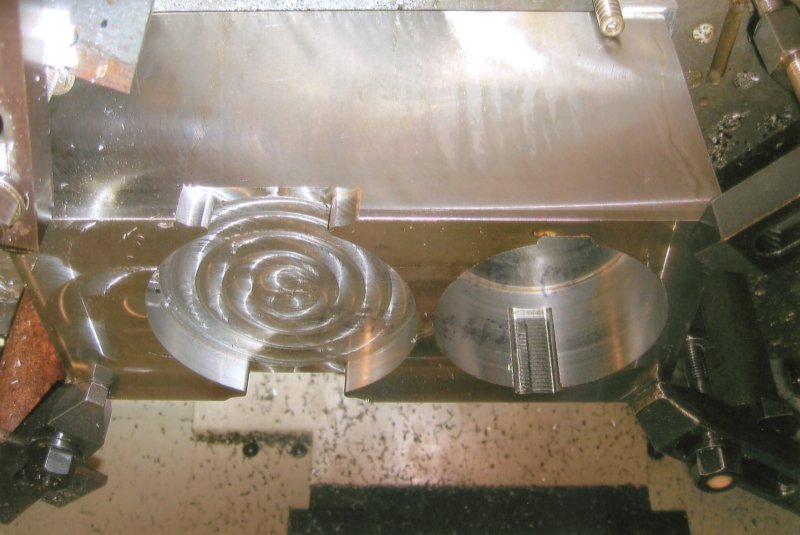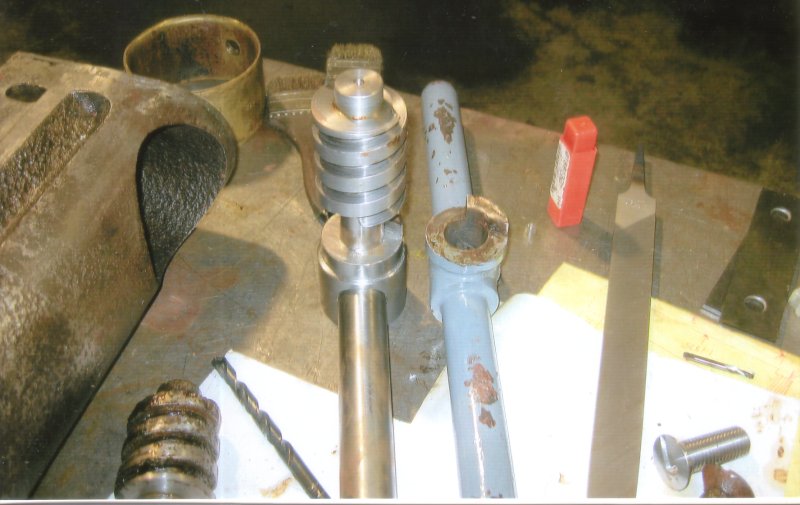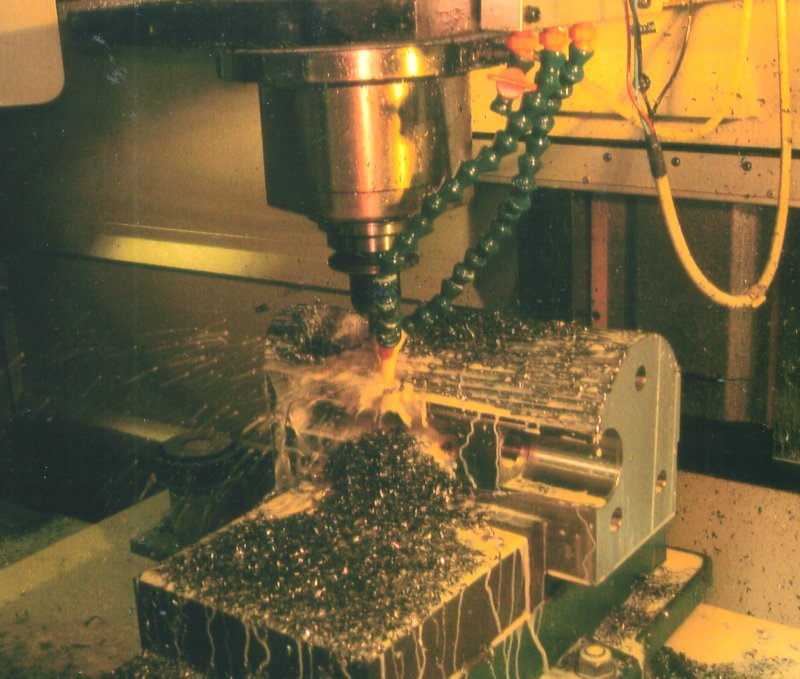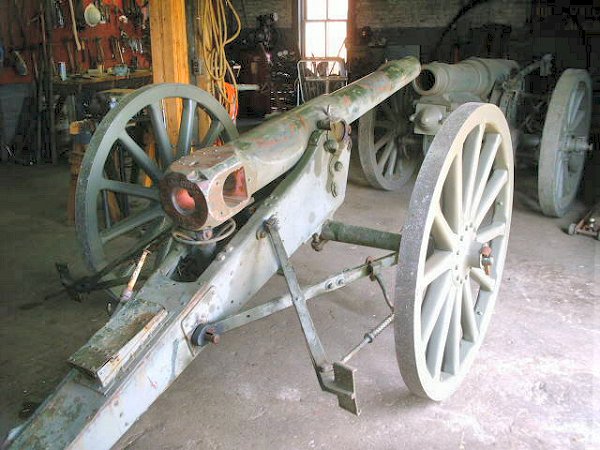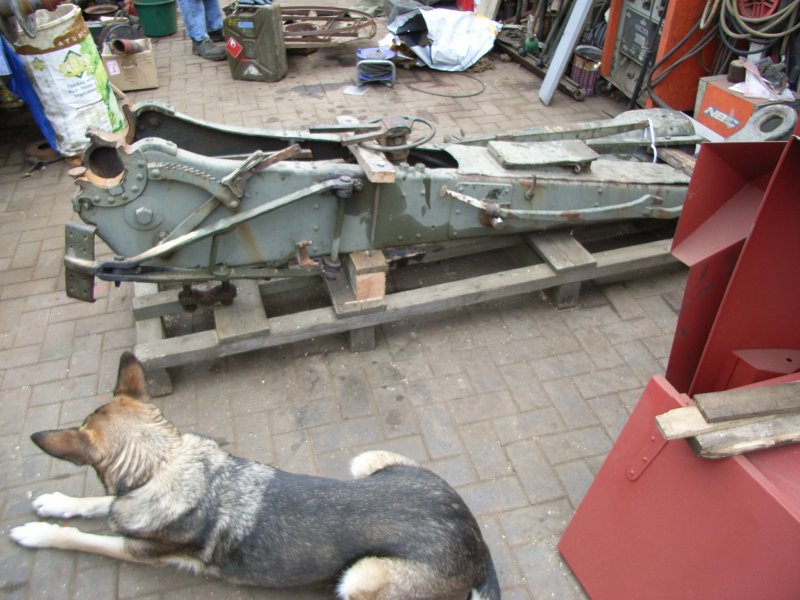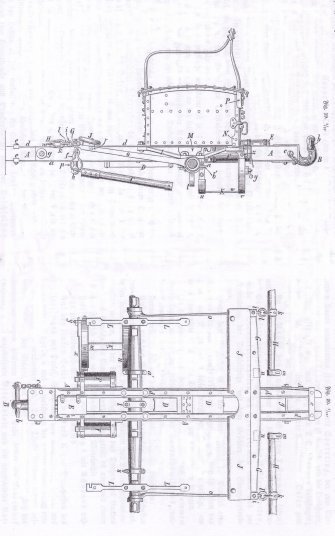|
Below: The restored 9cm. C/1873 Kanone with correct wheels and orginal sliding wedge breech block
Developed after the 1870-71 Franco-Prussian War, the 9cm C/73 Feldkanone improved German/Prussian Artillery reliability. Previous pieces that saw service in the Franco-Prussian War were prone to burst while firing due to metallurgical problems. The 9cm (8,8cm) was produced for the German Foot Artillery and at the same time, the 8cm (7,85cm) was for the German Field Artillery. The two must have been almost identical except for bore diameter but the 8cm seems to have been built only in limited numbers and apparently did not see continued service into WW1. The Foot Artillery’s 9cm C/73 saw over 40 years of service until the last days of the war in reserve Landsturm units. Apparently, after 1888 the 9cm saw service not only with the Foot Artillery but with Field Artillery units. By the wartime era, some were even improvised into an anti-aircraft (Flak) role. The Ottoman/Turkish Artillery used this weapon extensively where it saw service from the Russo-Turkish War 1878, through WW1 and even likely until the Turkish Revolution of 1923. Many examples of the C/73 can be seen today in Turkey, especially in towns near the Gallipoli (Gelibolu) Battlefield, such as the “Ramadan Gun” at Kesan. The C/73 is a rare piece in the US. Our C/73 and two fantastic examples owned by Jim Schoenung are among the few I am aware of in the US.
The C/73 utilized state of the art Krupp steel technology. It has a horizontal sliding wedge breech mechanism. A friction primer placed in a vent on-top-of the breech-ring ignites the propellant charge. The C/73 uses a single bagged propellant charge. There were later improvements of the C/73. These were the 9cm. C/73/1888 and the C/73/1891. Both seem to be primarily improvements in metallurgy. The C/73 is operated in conjunction with a limber and transported by a typical German Foot Artillery rigged six horse team and in Field Artillery service photographs show teams rigged with the hames and collar style harnessing. The tube for the 9cm. C/73 was also used on the model 1879 9cm. Schwere Kanone. The fortress/siege carriage for this piece is much taller for greater elevation and firing from behind breastworks. The same limber for the C/73 was again used for the Schwere Kanone. Below: The sliding wedge breech and elevating gear fitted to the 9cm C/73.
Below: Correct Wheels, hubs, and lynch pins produced by Matt Switlik all primed and painted Field Grey
Below: Side view with the 9cm C/73 repainted Field Grey
Early color schemes for the C/73 are light grayish blue with some details painted black such as the wheel hubs. After 1915 the C/73 is commonly seen in German Field Grey paint. In Turkish Service, a few even appeared in disruptive camouflage. The 9cm. C/73 in the Lovett Collection was in Field Grey before the restoration with the Prussian and King William Crest unpainted. On examining this piece, what seems to be original primer ends at the crest. These were mask off in a kidney shape and apparently not painted. This same approach was used in the restoration. The wheels on our C/73 in the final photos are for a 7,7cm lFK 96 n/A. The photos before restoration have the 9cm with much shorter 10,5cm lFH wheels
The piece was fitted with a direct fire sight (C82) and the Richtkreis (German indirect fire sight) which mounts further forward than on other German guns because of the vent in the center of the breech ring. The quadrant for the C/73 is somewhat like the one for the 10,5cm. l.F.H.”98/09 but has a convex arch not a concave ach as with the “98/09.
Above: Drawing of the 9cm C/73 brakes and elevation system. The C/73 is sometimes fitted with axletree seats but these were often removed, as is the case with the C/73 in the Lovett Collection. Elevation is accomplished by a simple worm shaft and handle mechanism. There is no traversing mechanism. Two types of brakes are seen on this model gun. Sometimes there is a very basic type that has two handles sticking out from under the gun’s axle. These turn a worm shaft that simply screws on or off a brake pad scrubbing along the gun-wheel tire. The type seen on the C/73 in the Lovett Collection is, in principle, the same as on the 15cm s.F.H. series, the 7,7cm l.F.K. series, the 10,5cm l.F.H series and the 10cm. K.“17. There is a brake handle mounted on the left side of the carriage that pulls a plate back and forth under the carriage. This movement pulls a cable that both loopes around the gun-wheel hubs and pulls the brake pad against the gun-wheel tire. Data for the 9cm C/73/88
Below: 9cm. C/ 1873 Kanone barrel (Left) King William I of Prussia Crest with "Ultima Ratio Regis" or loosely translated as the Ultimate Argument Settler of Kings (Right) Prussian Coat of Arms with "Pro Gloria et Patria" meaning For Glory and Fatherland (Note: This is not the Imperial German Eagle).
Below: The new orginal breech block in the gun Below: Another view of the new, orginal breech block Below: The orginal breech block moves easily Below: The new orginal breech block cleaned up and ready to go in the gun Below: In a fairly unexpected development, an original breech block became available for the 9cm Kanone C/1873. It is a bit rusty but everything is operational and complete. After a hundred years in the elements that is quite amazing.
Below: This is a piece of cardboard that was put between the brass and steel disk around 100 years ago as a spacer. The design and some lettering can still be clearly seen. My guess is that it was from a cigar box
Below: 9cm. Kanone C/1873 with the breech fitted. The wheels are generally the type used with the 10,5cm lFH 89/09 and not correct for this piece.
Below: The 9cm C/73 with the new breech and friction primer mount in place.
Below: A close up of the new breech
Below: The 9cm C/73 disassembled, sandblasted and with a coating of Ospho to neutralize any remaining rust
Below: The big surprise for the restoration, “T” Battery RHA uncovered by sandblasting. This appears to have been scraped onto the barrel through the original paint. Presumably, this exposed area then rusted. The result is a bit of graffiti from the British capturing unit that has stayed intact. T Battery Royal Horse Artillery was a part of XIV Brigade in the Middle East in 1914. In 1915 T Battery RHA transfered to the Western Front.
Below: The carriage after sandblasting and Ospho. One small patch was mig welded onto the sheet metal to replace a section that was rusted through. The patch is now virtually unnoticeable.
Below: This is the new 9cm C/73 Breech Block as work continues at the machine shop. This replacement is based on an original in Jim Schoenung's collection.
Below: This is the new handle and worm gear for the 9cm Breech. The orginal breech (on loan) is also seen in this photograph.
Below: The new breech as the curvature is cut in with a shaper. The slot for the worm gear can also be seen.
Below: Newly arrived in the USA and assembled in the Lovett artillery warehouse. Note there is no breech block yet.
Below: The 9cm Kanone C/1873 packed up and ready for shipment to the USA. The dog was not included in the deal.
Below: Drawing of the C/73 Limber
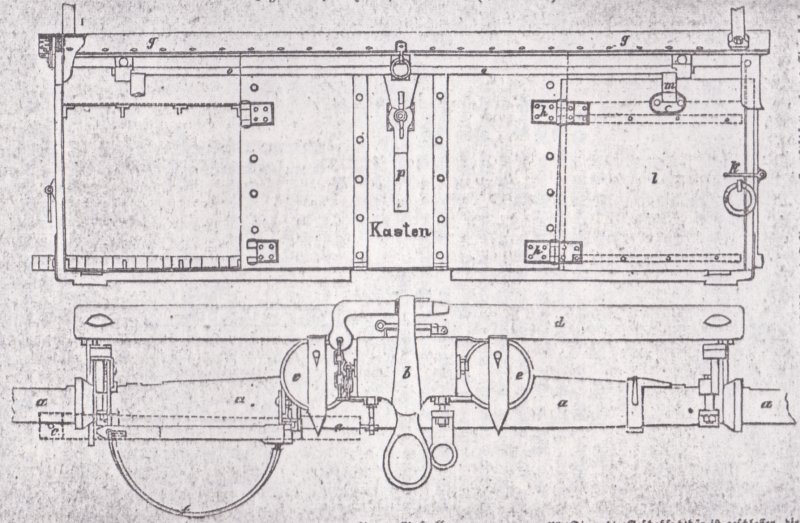
|
||||||||||||||||||||||||||||||||||
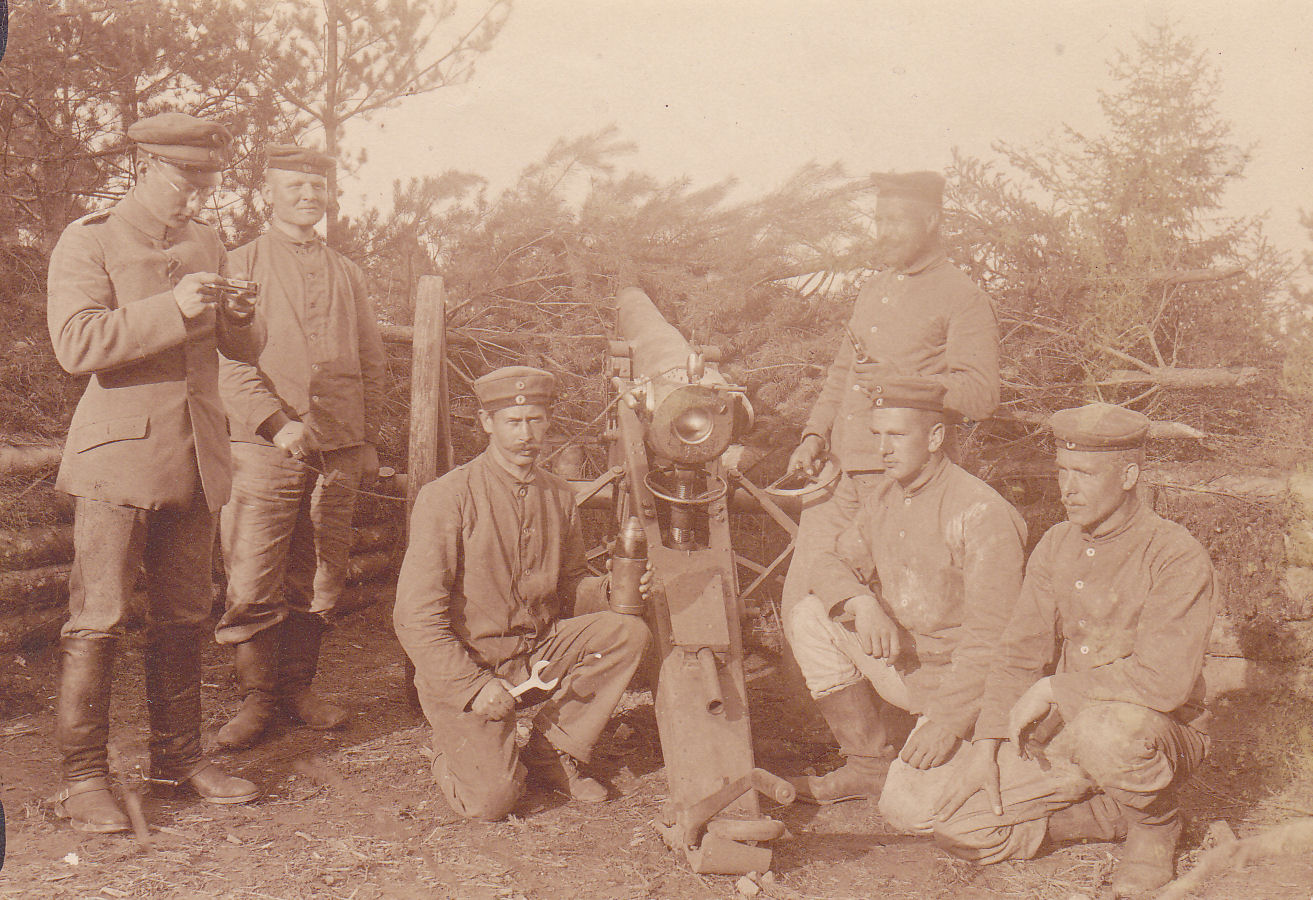 |
Above: A German 9cm. C/1873 field gun with crew. The artilleryman standing to the right side of the gun is holding an indirect fire sight (Richtkreis). The man sitting just to the left side of the gun is holding a fuze setter and a 9cm projectile. The officer appears to be holding a gunner's quadrant. Accept for the officer who is wearing a model 1915 tunic with cavalry boots, the crew is wearing white work uniforms.
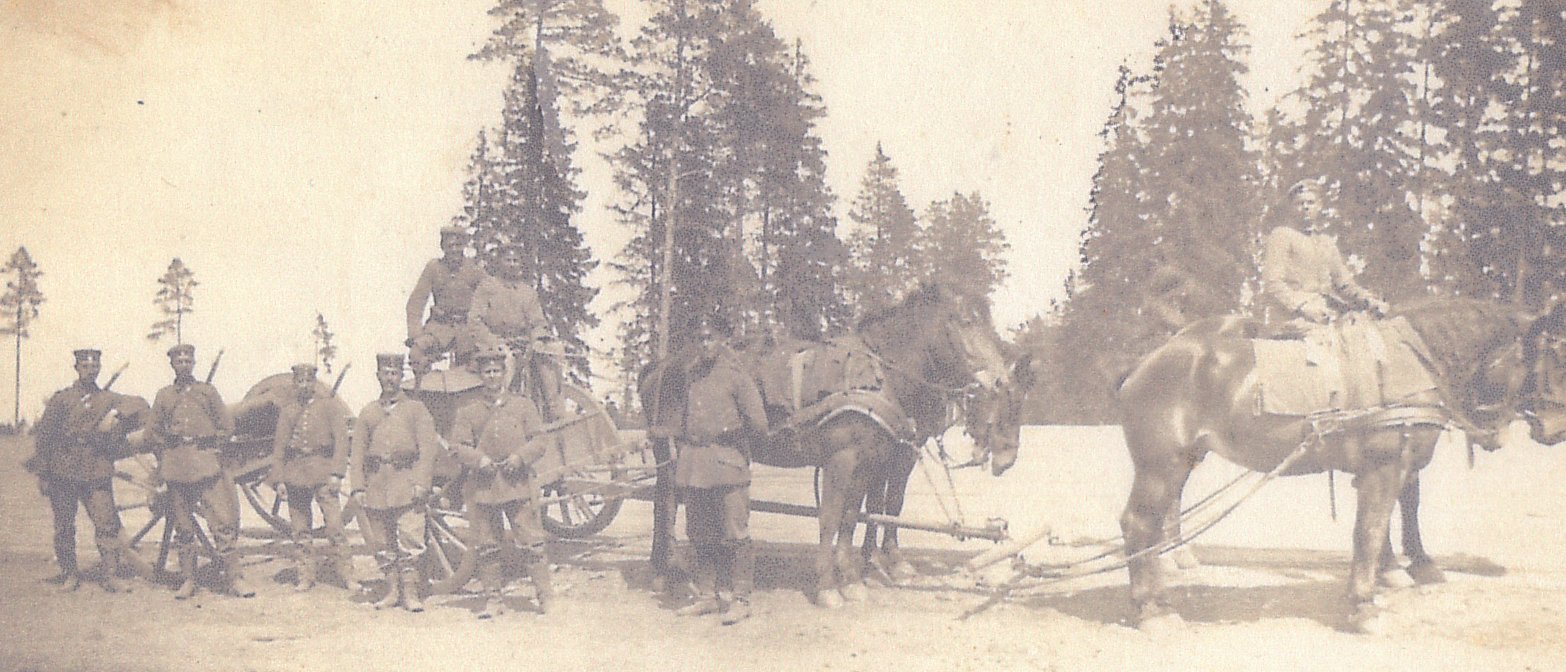 |
This original photo shows a German Foot Artillery Driver Team (normally 6 horses, in this case 4) towing what appears to be a 9cm. C/73. It is also possible that this is a captured field piece. The men standing in front of the gun obscure it too much to be certain.
